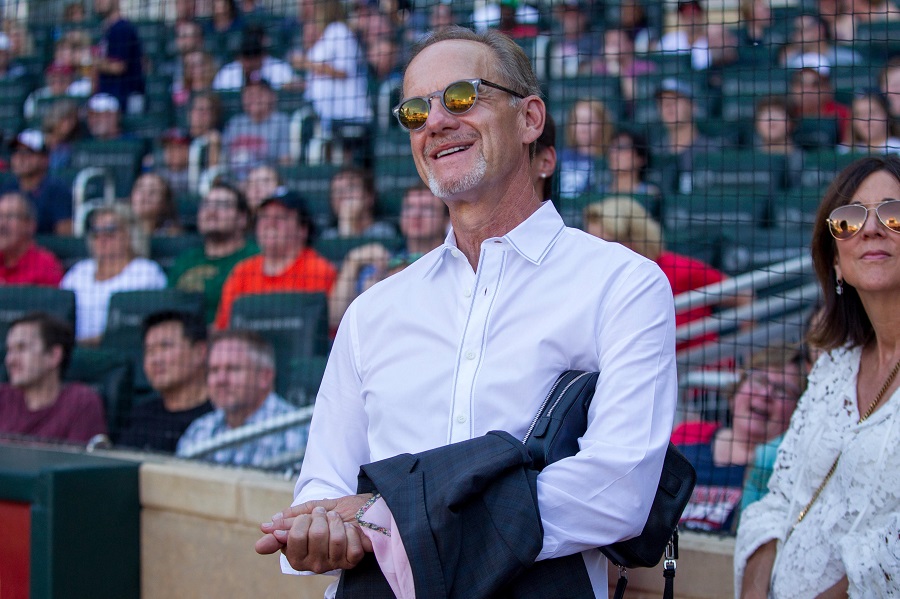
Twins Video
Let’s rewind over a half decade and land back in 2013. The Chicago Cubs and Houston Astros both employed top five farm systems but were among the worst teams in baseball. Chicago won just 66 games while Houston joined the American League and punted on the season to the tune of 51 victories. The next year both clubs remained in the top five on the farm but also showed life in the majors to the tune of 73 and 70 wins respectively. Pairing their development success with what was happening at the highest level, it became evident that it was time to go.
In 2015 the Cubs opened with a $106.6 million payroll, 98% increase from the $53.6 million a year prior. Houston was not as drastic, going from $41.6 million to $64.8 million (a 56% increase). Both teams jumped up in wins, most notably Chicago parlaying their 97 into an NLCS appearance (in which they were swept by the Mets). 2016 saw the Cubs fully realize their goal with a World Series victory, the first since 1908. To get there Theo pushed payroll to $161.3 million, another 51% increase, or jump of 200% since 2014.
Image Credit: Forbes
To be fair, Minnesota will never operate on the same revenue stream that a national brand like the Cubs benefit from. Houston is a much more feasible example though, and while they likely have a more lucrative TV deal as well, 2019 revenues highlight the gap being relatively insignificant. The Astros also saw an 86-win successful year in 2015, only to take a step backwards (84 wins) in 2016. That is largely reflective of the cycle Minnesota endured popping up for a one-game Wild Card loss.
Payroll growth in Houston has been noteworthy as well. Coming out of the 86-win campaign in 2015 the Astros operated differently than the Twins (who went from $130MM in 2018 to $114MM in 2019) by increasing payroll to $75.4 million, a slight 16% increase. They finished third in the division, but the dam was clearly ready to break. Still with a top farm system, and so much big-league talent, Houston went gangbusters spending $132.5 million in 2017, a 76% increase that culminated in a World Series.
Despite being an uncapped sport teams all have a spending threshold. Chicago suggests they’re near theirs and have begun to scale back. The additional funs provided them a window of five straight winning seasons, 90 wins in all but one of them, and the ultimate goal. Houston is in the midst of a stretch where they’ve won three straight division titles, 100 games in three straight seasons, and have gone to the World Series in two of the past three years.
Infrastructure and development in baseball is about creating a backbone capable of sustaining excellence at the highest level. Whether prospects contribute to maturing on the biggest stage, or being parlayed into veteran talent, the goal is not a constant state of hording. Minnesota’s window is now fully open, paired with ideal opportunity around them, and the financial flexibility to make waves. You could, and I have, made the argument that significant spending would have provided marginal gains in recent seasons. That is no longer on the table, and the blueprint has already been draw up for these Twins.
2020 isn’t about dabbling at $130 million. This franchise now needs to show up at the checkout counter and make use of what it has built these past few years.
Please share your thoughts in the comments below. Not registered? Click here to create an account. To stay up to date, follow Twins Daily on Twitter and Facebook.
More from Twins Daily
2020 Offseason Handbook Now Available for Download
MORE FROM TWINS DAILY
— Latest Twins coverage from our writers
— Recent Twins discussion in our forums
— Follow Twins Daily via Twitter, Facebook or email
— Become a Twins Daily Caretaker







Recommended Comments
Join the conversation
You can post now and register later. If you have an account, sign in now to post with your account.
Note: Your post will require moderator approval before it will be visible.